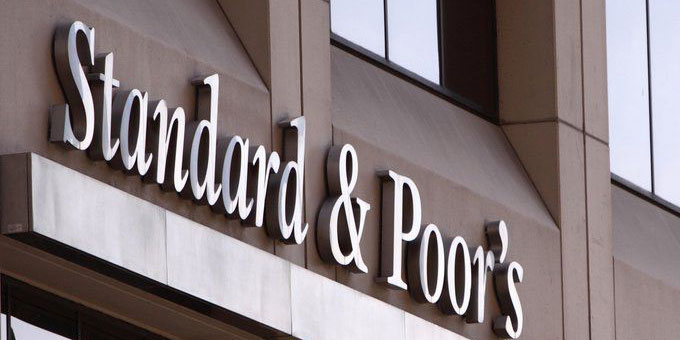Oct 15, 2023 By Bethany Walsh

(I) The High flexibility of Trust
The flexibility of a trust is reflected in the identity of the parties to the trust. Generally speaking, a trust has three parties: the principal, the trustee and the beneficiary. But sometimes there are only two parties to a trust. For example, if the principal establishes a declarative trust, that is, a trust established by oral or written declaration in which the principal himself is the trustee, the principal and the trustee are one and the trust has only two parties. Another example is that if the principal establishes a self benefit trust, that is, the principalis the beneficiary of the trust at the same time, then the principleand the beneficiary are one and the trust has only two parties. In addition to the above, there are trusts without principals. For example, a constructive trust created by law for the purpose of fairness does not have a trustee who voluntarily establishes the trust.
Understanding: There may be only two parties to a trust, but not less than two. Since a person cannot be liable to himself, the same person cannot be both a principal, a trustee and a beneficiary.

(2) The high-degree fiduciary relationship in Trust
A trust arises from a fiduciary relationship. The principaltransfers the trust property to the trustee out of his confidence in the trustee and the trustee take over and manages the trust property, and the trustee therefore bears strict obligations to the principal. This is a fiduciary relationship. This fiduciary relationship exists not only between the principaland the trustee, but also between the trustee and the beneficiary.
Once the trust is established, the beneficiary places great trust on the trustee, who has a very high degree of control over the affairs of the beneficiary. Therefore, the trustee has fiduciary obligations to the beneficiary. The trustee must be absolutely honest and fair whenmanaging the trust property and must act forthe interest of the trustee. The most important obligation of the trustee is the principle of fairness. According to this principle, the trustee must treat the beneficiaries with different interests fairly, and cannot maximize the interests of the other party at the expense of the interests of any party, so that the rights of all beneficiaries can be fairly protected.
Understanding: On the other hand, the trustee distributes the benefit to the beneficiaries only to the extent of the trust property. Unless intentionally or negligent, the trustee is not required to use his personal property to assume any responsibility arising from the management of the trust.

(3) The Dual Ownership of Trust Property
The original emergence of trust is the separation of ownership and beneficial rights in order to escape the burden of feudal land ownership attached to land ownership. The court of Chancery not only imposes personal obligations on the holders of legal title, but also protects the interests of the beneficiaries of the trust in the trust property. The result is dual ownership: legal ownership is held by the trustee and equitable ownership is held by the beneficiary. This kind of division of ownership of trust property is difficult to be accepted by the civil law system, so scholars in the civil law system countries call this kind of legal ownership nominal ownership, while the equity ownership is called substantial ownership or beneficial right.
Taking the trust established by A mentioned above as an example, Bank A obtains one million yuan from A, but this is only the "nominal ownership", so Bank A cannot enjoy the one million yuan or any accompanying benefits, which means that the "nominal ownership" only grants the decentralization to the management office of the trust property of Bank A. As for all amounts under the special account, which shall belong to B when B reaches the age of 22, this is the "material ownership" of the trust property and belongs to B. In other words, the trustee obtains the nominal ownership of the trust property because of the trust, so he can manage the trust property. The beneficiary acquires the substantial ownership and can enjoy the benefits of the trust property and its management, and the interests it enjoys become “Trust Interests”.

(4) The Independence of Trust Property
Trust property is the core of trust relationship. Its core position is that the trust is established and effective only when the principaltransfers the trust property to the trustee in terms of the establishment and survival of the trust relationship. If the trust property ceases to exist, the fiduciary relationship ceases to exist. The most significant characteristic of trust property lies in its “independence”.
First of all, when the principaltransfers the property to the trustee, the ownership of the property is also transferred from the principalto the trustee. In the case that the principaldoes not reserve the right of arbitrary revocation of the trust, the creditors of the principalhave no claim to the trust property.
Secondly, although the trustee has the ownership of the trust property, the trust property must be separated from its free property, and the creditors of the trustee have no claim to the trust property owned by the trustee. Finally, although the beneficiary of the trust owns the equitable ownership of the trust property, that is, the beneficial right of the trust, the creditors of the beneficiary have no claim to the trust property.

(5) The Continuity of Trust Management
In the general principal-agent relationship, if the principal or agent loses capacity or dies, the principal-agent relationship will be terminated. In a fiduciary relationship, once a trust is established, the trust property does not terminate upon the death of the principal,trustee or beneficiary.
First of all, a successor trustee can be appointed in the trust document. Once the trustee is unable to perform his/her duties, the successor trustee will continue to manage the trust.
Secondly, the trust documents can also stipulate that the beneficiary should elect a new trustee according to the standards specified in the trust documents, so as to ensure that the trust can continue to exist as much as possible according to the wishes of the principal. Trust Law stipulates that in the absence of a trustee, the person entitled to appoint a successor trustee includes the principal, beneficiary or guardian, but the court is not endowed with the power to appoint a trustee.
-

Top Alternatives to Robinhood: Best Apps for Former Users
Jul 31, 2024
-

Rewards Credit Cards — All You Need To Know
Feb 07, 2024
-

What Are The Most Important Things To Remember Regarding An Expired Card?
Oct 29, 2023
-

Discuss All About: U.S. Military Budget, Its Components, Challenges, and Growth
Oct 19, 2023
-

Best Small Business Loan For Bad Credit — An Ultimate Guide
Feb 08, 2024
-

Best iPhone Applications For Black Friday
Dec 01, 2023
-

Titan Invest Review: Can Its Portfolio Outperform?
Jul 31, 2024




